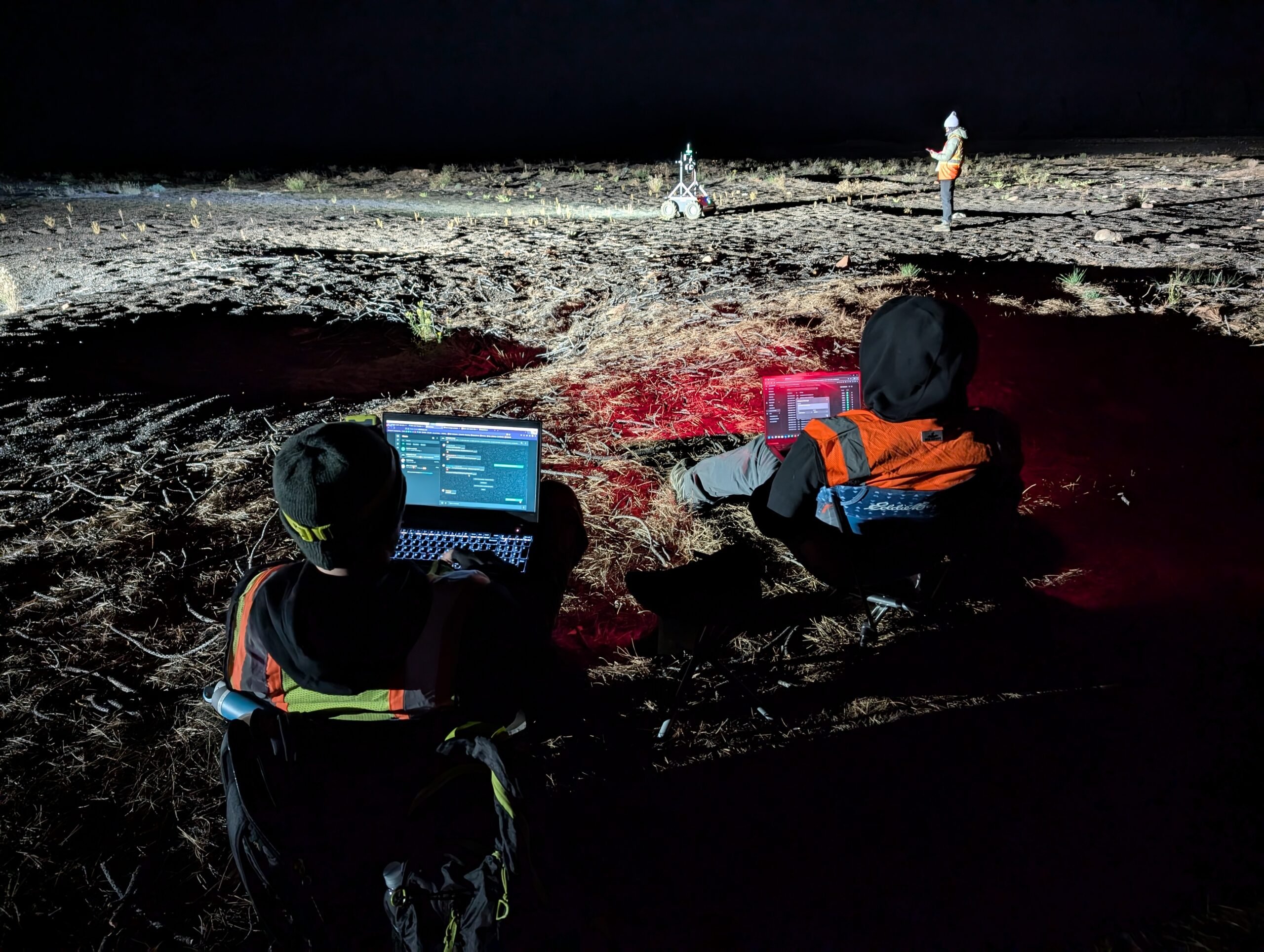ASAS-CRATERS (AUTONOMOUS SOIL ASSESSMENT SYSTEM: CONTEXTUALIZING ROCKS, ANOMALIES AND TERRAINS IN EXPLORATORY ROBOTIC SCIENCE)
Mission Control is developing ASAS-CRATERS; cutting-edge AI algorithms that will advance a planetary rover’s ability to autonomously characterize the surface in support of science operations and rover navigation.

Our novel science-enhancing artificial intelligence (AI) technology payload, ASAS-CRATERS (Autonomous Soil Assessment System: Contextualizing Rocks, Anomalies and Terrains in Exploratory Robotic Science), is part of the new wave of commercial lunar exploration.
COMMERCIALIZING SPACE EXPLORATION
As privately-operated robots start exploring the lunar surface, autonomous capabilities will be increasingly important to provide value in low-cost and short-duration missions. ASAS-CRATERS is a multi-mission system that can support a wide range of scientific payloads and reduce the operational workload of scientists.
ASAS-CRATERS consists of cutting-edge AI algorithms in terrain classification, novelty detection, and data aggregation, and will advance a planetary rover’s capability to autonomously assess its surroundings for scientific value.
INNOVATING FORWARD
The ASAS-CRATERS project leverages previous CSA-funded space technology developments that Mission Control has made in robotic exploration and AI. We have learned a lot about how to make planetary rovers safer and more efficient drivers, and we are now taking that technology and making rovers smarter for science.
EXPERT TEAM
ASAS-CRATERS is being developed in collaboration with a fully Canadian team of experts in topics ranging from planetary science to robotics and embedded systems for spaceflight. The Science team is led by Mission Control Chief Exploration Scientist, Dr. Melissa Battler, and includes Dr. Gordon Osinski, Director of Research at Western University’s Institute of Earth and Space Exploration (IESE), and Dr. Ed Cloutis, Director at University of Winnipeg’s Centre for Terrestrial and Planetary Exploration (C-TAPE). The science team is also supported by Dr. Ryan Ewing of Texas A&M University, who was a Surface Properties Scientist for NASA’s MSL rover.
The technology will be developed in conjunction with Xiphos Systems Corporation, a Canadian firm that boasts four generations of products flying in space for over 17 years. MDA, the world leader in space robotics, supports the project by providing radiation analysis of the Xiphos hardware for the Lunar environment. Technology development is also supported by Dr. Ken McIsaac at Western’s IESE and Dr. Krzysztof Skonieczny at Concordia University. In total, 10+ students at Mission Control and partnering universities are engaged in this project.








